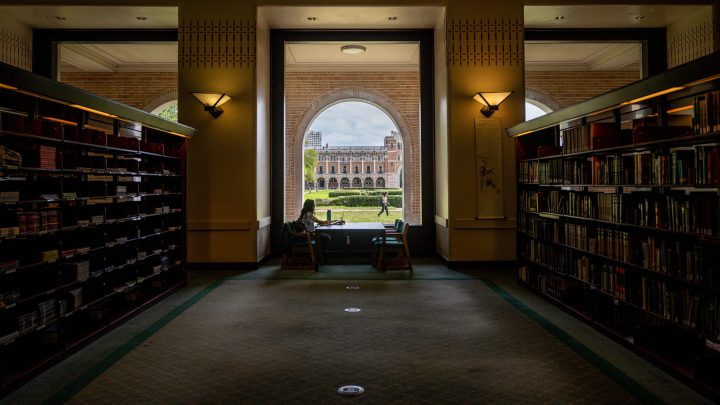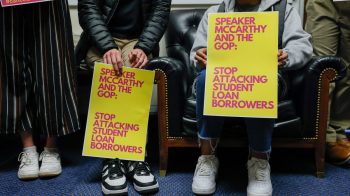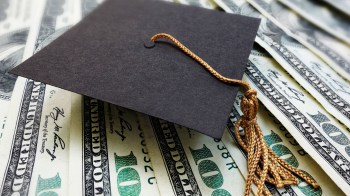
More than 800,000 people are getting student loans forgiven
More than 800,000 people are getting student loans forgiven

Student loans are back. The pandemic pause is officially over after three and a half years. Interest started accruing again on federal student loans on Sept. 1, and payments are due starting in October.
Carol Barclay is one of the more than 40 million people who have been getting ready to start paying again. She took out about $65,000 back in the 1990s to get a master’s degree in infant, toddler and family development, and she’s been paying a little over $300 a month ever since.
When she was working full-time, her student debt didn’t feel like a big deal. She put it on auto pay, she said, “and just really didn’t think about it very much.”
Until recently. At 78, Barclay’s mostly retired now.
“My income is lower,” she said. “I’m only teaching one class at the community college. And then I have a minuscule pension and Social Security. So I was more concerned about the payments starting up again now than I have been about the payments in the past.”
Then, a couple of weeks ago — just before the pause was about to end — she got an unexpected email.
“It was so random and weird,” she said with a laugh. “So then I Googled around a little bit to see, ‘Is this real?’” She also texted her daughter, “and she said, ‘Is it a scam?’”
It was not a scam. Barclay’s student loans had been forgiven in full thanks to a one-time Biden administration fix to the Income Driven Repayment program.
IDR has been around in some form or another since the mid-1990s as an alternative for people struggling to afford their monthly payments on a standard 10-year repayment plan.
“The way it typically works is you make monthly payments based on your income, and if you haven’t paid off your loans in full at the end of the 20- or 25-year term, any remaining balance is forgiven,” said Adam Minsky, a lawyer who works with student loan borrowers.
Or, at least that’s how it’s supposed to work.
“The problem is that these programs were poorly administered for a very long time,” Minsky said. “People weren’t told that these programs existed.”
Or how to qualify for forgiveness, so few people did.
Last spring, the Biden administration announced a one-time fix to rectify what Secretary of Education Miguel Cardona called “years of administrative failures” with the program.
Now, the Education Department is going back through every borrower’s account and retroactively giving people credit for years of payments that previously didn’t count and for periods their loans were in forbearance or deferment.
The review is automatic. The only thing borrowers have to do to qualify is have direct loans or Federal Family Education Loans held by the Education Department. People with other kinds of federal loans can consolidate to turn their loans into direct loans. As long as they do so by Dec. 31, they will be eligible for the IDR account adjustment — and, if relevant, for Public Service Loan Forgiveness too.
So far, the department has determined that more than 800,000 people qualify to have their loans forgiven immediately. In mid-August, it started letting them know.
Tammy Wyatt got the letter a couple of weeks ago at home in Dayton, Ohio. The first line reads: “Congratulations! The Biden-Harris Administration has forgiven your federal student loans listed below … in full.”
Wyatt read it a few times before she registered what it meant. “I just, I went into shock,” she said.
At 52, she’s retired from her job as a nurse in the Air Force because of a disability. Like Carol Barclay in New York City, Wyatt has also been paying her student loans since the ’90s. Unlike for Barclay, they’ve been a major source of stress.
Wyatt took out about $50,000 to get her bachelor’s degree in nursing “not knowing how long it would actually take me to get through school, for one, and not knowing how long it would take me to pay them back, for two.”
It took her most of her 20s to get through nursing school, and when she graduated and got that first student loan bill, “I had sticker shock,” she said. “It was more than my rent.”
Her rent was maybe $400 or $500 a month. Her student loans were $1,200.
Wyatt was eventually able to get her monthly payment lowered to a couple of hundred dollars a month. But because it was so low “I ended up basically — for 20 years — just paying interest,” she said.
And not even all of it. The unpaid interest was added to the principal, so even though she was making payments every month, her balance grew. She figured she’d be paying it until she died.
Then she got the letter.
“I could not believe — after all this time, all that work getting through nursing school, after 20 years of military service and three deployments, and moving my child from base to base to base — that it was finally forgiven.”
Her balance was almost $52,000. That’s about the same amount she borrowed more than 20 years ago.
There’s a lot happening in the world. Through it all, Marketplace is here for you.
You rely on Marketplace to break down the world’s events and tell you how it affects you in a fact-based, approachable way. We rely on your financial support to keep making that possible.
Your donation today powers the independent journalism that you rely on. For just $5/month, you can help sustain Marketplace so we can keep reporting on the things that matter to you.

















